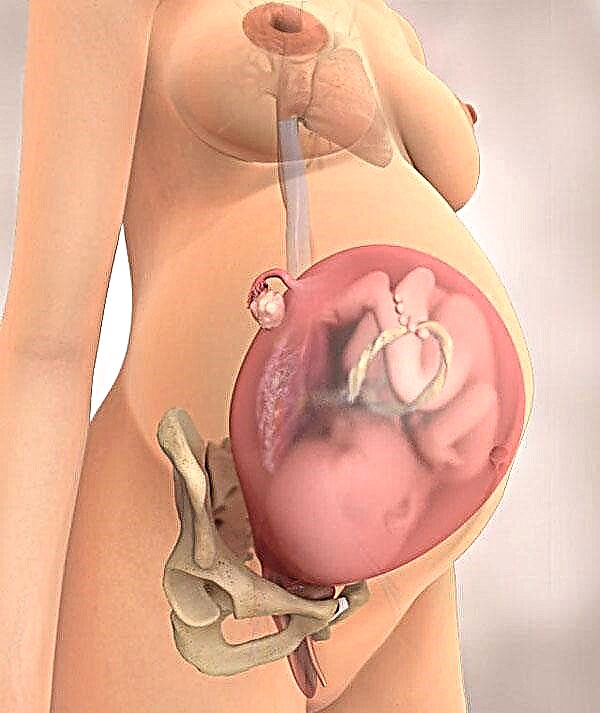
A rash is the most common symptom of chickenpox. It appears on the body of a sick baby on the first day of the onset of symptoms and at first looks like reddish dots. Soon, such a rash becomes papules, inside which a clear liquid begins to collect. As soon as bubbles form on the body of the crumbs, it immediately becomes clear that the child has chickenpox.
Since the rash itches quite a lot, and when scratched, it can become infected, which will lead to deeper damage to the skin and the appearance of scars, the chickenpox rash is treated with various antiseptics and agents that accelerate wound healing. One of them is fucorcin. Can such a drug be used for chickenpox in children and how to do it correctly?

Composition and properties
Fukortsin is a bright crimson solution, the color of which is due to the dye fuchsin. In addition to it, the medicine contains ethyl alcohol, distilled water, boric acid, acetone, resorcinol and phenol. The drug is produced in dark glass bottles of 10 and 25 ml.
Fukortsin acts as an antiseptic, protecting the treated skin from bacterial and fungal contamination. For this reason, this medicine is often used for fungal and pustular skin lesions. Fukortsin can also lubricate cracks, erosion and wounds formed on the skin.

Does it help with chickenpox
Fucorcinum treatment of vesicles with chickenpox is quite common, since the remedy helps:
- Accelerate the drying of pockmarks.
- Disinfect the skin surface.
- Do not allow bacteria to enter the elements of the rash.
At the same time, parents should understand that fucorcin is not able to neutralize the virus that caused chickenpox, since it is not an antiviral agent. The medicine only helps to get rid of discomfort and bladder infection.

Contraindications
The use of fucorcin is contraindicated in case of intolerance to any of the components of the drug. To detect increased sensitivity to the product, during the first use, you need to lubricate a small area of the skin with fucorcin, and after a while evaluate the reaction. If there is a burning sensation, itching and redness, it is recommended to refuse the use of fucorcin.
Also, do not lubricate a large area of the skin with such an antiseptic. Phenol and acetone in the composition of such a medicine, when applied abundantly, will be actively absorbed into the skin, which will lead to weakness and dizziness, and in some cases - to high blood pressure and respiratory distress.
We also note that it is impossible to treat mucous membranes with fucorcin, on which bubbles can also form with chickenpox. For washing the affected mucous membranes, it is better to use furacillin, chamomile infusion or miramistin.

Instructions for use
It is convenient to apply fucorcin with a cotton swab or a match, on the tip of which a little cotton is twisted. Bubbles are processed pointwise twice a day (maximum - 4 times a day), often after changing clothes or a bath. An additional disinfecting effect can be provided by additional application of special creams, gels or pastes on top of the vesicles lubricated with fucorcin (the doctor will help you choose the most suitable drug).

Which is better - fukortsin or brilliant green
Fucorcin, like brilliant green, is based on aniline dye. Therefore, if the mother of a child with chickenpox is interested in whether it is possible to treat the skin of the baby not with brilliant green, but with fucorcin, then the answer is “of course you can”. The action for both drugs is similar, so, when considering what to choose for the treatment of chickenpox, you can prefer any of these solutions.
However, they also have some differences:
- Fukortsin is not advised to treat the skin of babies under one year old, and brilliant green can be used even in babies.
- The composition of fucorcin contains more components, so the risk of hypersensitivity to the solution is greater. At the same time, the brilliant green contains only dye and alcohol.
- Skin coloration with fucorcin is more persistent, but at the same time stains from pink dye are much easier to remove than from brilliant green.
- Red-pink dots on the body of a child to many parents, and even to the kids themselves, seem more aesthetic than green ones.


Reviews
Mothers who have used fucorcin for spot treatment of chickenpox rash often respond positively to such a remedy. They note that the drug, when used correctly, does not dry out the skin and accelerates the healing of vesicles. Users emphasize that fucorcin stains clothes and linen less, which is why it is often chosen instead of brilliant green. The advantage of the funds is also called its low cost (a bottle can be purchased for 40-60 rubles).
What to wipe off the skin
In order to remove pink fucorcin spots from the skin of a child who has suffered chickenpox after recovery, you can use one of the following means:
- Alcohol solution of calendula. Soak a cotton swab in this solution and wipe the red parts of the body.
- Fat baby cream. Apply it on dyed skin and leave it on for 20-30 minutes, then remove with a cotton swab.
- Vegetable oil. After treating baby skin with any oil, wipe it with cotton after 20 minutes.
- A mixture of salicylic and ethyl alcohol 1: 1. After mixing these types of alcohols, wet a cotton swab and wipe the pink spots.
- A solution of vitamin C. The powder form of this vitamin should be boiled and cooled, and then use a cleanser.
- A mixture of baby soap and hydrogen peroxide. After rubbing regular baby soap on a grater, add a little peroxide to it, and then lubricate the traces of fucorcin with the resulting product.
In addition, you can use aspirin to discolor fucorcin stains. To do this, soak a pill and rub the skin stained with fucorcin with it.




